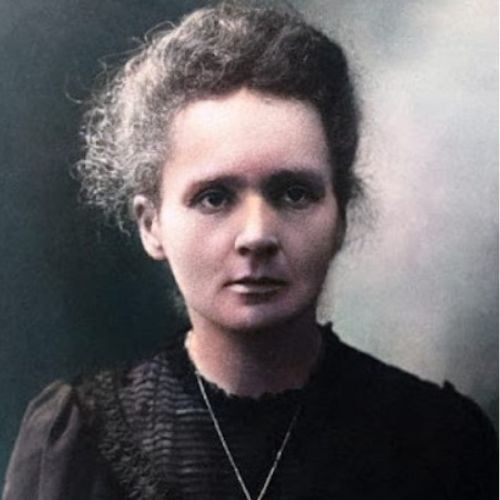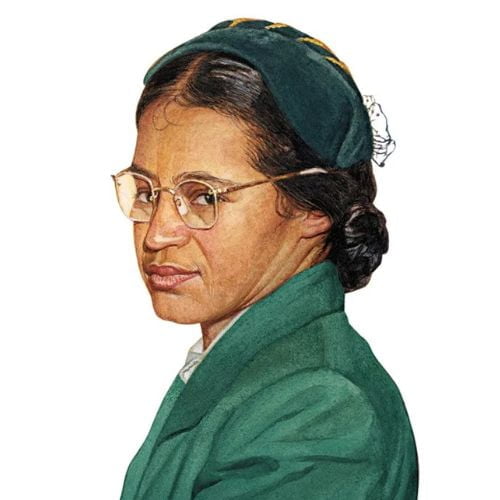In women’s history, women have defied societal norms, shattered glass ceilings, and left an indelible mark on the world. From warriors and rulers to scientists and artists, their contributions have shaped the course of human civilization. In this article, we pay tribute to a few of the many remarkable women who have made history through their courage, intellect, and perseverance.
Cleopatra
Cleopatra VII, the final active ruler of Egypt from 51 to 30 BC, was a prominent queen of the Ptolemaic Kingdom. She hailed from the esteemed Ptolemaic dynasty, tracing her lineage back to Ptolemy I Soter, an associate of Alexander the Great. In addition, Cleopatra governed Egypt alongside her father, then her brothers, and finally with her son, over almost three decades. Moreover, Known for her intelligence and mastery of multiple languages, she was the only known Ptolemaic ruler to have learned Egyptian.
After Cleopatra’s reign, Egypt became a Roman province, ending the Hellenistic period in the Mediterranean. Our knowledge of Cleopatra’s life mainly comes from Greco-Roman scholars like Plutarch, as there are no contemporary accounts available.

- Cleopatra VII Thea Philopator ruled Egypt from 51 to 30 BC, as the last active sovereign.
- She hailed from the Ptolemaic dynasty, tracing her lineage back to Ptolemy I Soter, a Macedonian Greek general and comrade of Alexander the Great.
- Cleopatra governed alongside her father, brothers, and son, maintaining her reign for nearly thirty years.
- Known for her intellect, she was well-educated and proficient in multiple languages, including Egyptian.
- Depictions of Cleopatra are abundant in art forms like literature and cinema, with the 1963 film “Cleopatra” starring Elizabeth Taylor being notable.
- Cleopatra’s life and reign continue to captivate audiences through numerous adaptations across different media.
- Her historical legacy as Egypt’s last pharaoh portrays her as an astute and multilingual ruler who asserted her authority.
- Cleopatra is featured in slot games like “Heart Of Cleopatra” by Pragmatic Play, offering an immersive experience in ancient Egypt.
Joan of Arc
Joan of Arc, also known as Jeanne d’Arc, was a national heroine of France and a peasant girl who played a significant role in the Hundred Years War. So, Here are some key facts about Joan of Arc:

- Joan of Arc, also known as Jeanne d’Arc, emerged as a national heroine of France, hailing from a peasant family in the village of Domrmy, France, born in 1412.
- At 17, Joan believed divine visions guided her to help Charles VII liberate France from the English.
- Recognizing her devotion, Charles sent Joan to Orléans, where she played a key role in securing a French victory, a turning point in the Hundred Years War.
- However, Joan was captured, tried for witchcraft and heresy, and ultimately executed at the stake at age 19.
- Following her martyrdom, Joan of Arc evolved into a powerful symbol of French nationalism and identity. Also, In 1920, the Roman Catholic Church canonized her, bestowing upon her the status of one of the patron saints of France.
- Joan of Arc’s story is immortalized in literature, music, art, and theater, inspiring audiences worldwide.
Marie Curie
Marie Curie, born Maria Sklodowska, was a celebrated physicist and chemist known for her groundbreaking work on radioactivity.

- Born on November 7, 1867, in Warsaw, Poland, Marie Curie was the youngest among five siblings in a family of educators.
- In 1891, she went to Paris to study at the Sorbonne, where she earned degrees in Physics and Mathematical Sciences.
- Marie Curie tied the knot with the French physicist Pierre Curie in 1895. Together, they embarked on groundbreaking research into radioactivity, making several seminal discoveries.
- In 1903, Marie and Pierre Curie, with physicist Henri Becquerel, won the Nobel Prize in Physics for their radiation research.
- Tragically, Pierre Curie met his demise in a street accident in 1906, leaving Marie to forge ahead with their scientific pursuits.
- In 1911, Marie Curie won the Nobel Prize in Chemistry for discovering polonium and radium.
- She made history as the first woman to win a Nobel Prize and the only person to win in two different scientific fields.
- Marie Curie’s work on radioactivity revolutionized nuclear physics and chemistry, especially in cancer treatment.
- Her dedication to science and trailblazing spirit inspire generations of scientists worldwide.
Rosa Parks
Rosa Louise McCauley Park was born on February 4, 1913, in Tuskegee, Alabama. She stood as an American civil rights activist who left an indelible mark on history. Additionally, Here are some pivotal aspects of Rosa Parks’ life and activism:

- Rosa Parks is primarily remembered for her courageous act of defiance on December 1, 1955, in Montgomery, Alabama. Moreover, when she refused to surrender her bus seat to a white passenger. However, This single act ignited the Montgomery bus boycott, a monumental protest against racial segregation in public transportation.
- Parks’ arrest and the year-long boycott led to a landmark Supreme Court ruling against bus segregation.
- From an educator family, Parks attended the Montgomery Industrial School for Girls before studying at Alabama State Teachers College. However, familial responsibilities compelled her to leave college to care for her ailing grandmother and mother.
- In 1932, Rosa Parks married Raymond Parks, a barber and civil rights advocate.
- Parks served as secretary for the Montgomery NAACP chapter, working with civil rights leaders like Martin Luther King Jr.
- Women’s studies emerged to address historical neglect, seeking inclusive recognition of women’s contributions.
- Rosa Parks’ courage and commitment to civil rights earned her the title “Mother of the Civil Rights Movement,” inspiring people globally.
Rosa Parks’ resistance and activism challenged racial segregation, leaving a lasting legacy.
Frida Kahlo
Frida Kahlo, born Magdalena Carmen Frida Kahlo y Calderón on July 6, 1907, in Coyoacán, Mexico City. Furthermore, She gained renown as a Mexican painter celebrated for her portraits, self-portraits, and artworks influenced by Mexican culture and nature. Here are some significant facts about Frida Kahlo:

- Kahlo’s art frequently delved into themes such as identity, postcolonialism, gender, class, and race in Mexican society. Moreover, She adopted a folk art style characterized by vibrant colors, drawing inspiration from the nation’s popular culture and artifacts.
- Frida Kahlo’s childhood home, La Casa Azul, in Coyoacán, now houses the Frida Kahlo Museum, providing public access to her life and legacy.
- Despite health challenges from childhood polio and a severe bus accident at 18, causing lifelong pain, Kahlo persisted in her art.
- Among her famous works are self-portraits, often depicting Kahlo in vibrant Mexican attire, exploring identity and personal experiences.
- Kahlo’s relationship with the famed Mexican muralist Diego Rivera was tumultuous, characterized by divorces and remarriages. Also, Their complex dynamics are evident in some of Kahlo’s paintings, such as “The Two Fridas” (1939).
- Frida Kahlo’s art and life continue to be celebrated and scrutinized. Her profound impact on the art world has inspired countless artists and admirers globally.
- The Frida Kahlo Museum, in her former home, preserves her legacy, fosters research, and promotes understanding of her life and art.
Frida Kahlo’s unique style, influenced by her experiences and identity exploration, makes her an iconic figure in art. Her paintings remain compelling, sparking dialogues about culture, identity, and the human condition.
Related Posts:
A Royal Tribute: The Unveiling of Queen Elizabeth II Statue
Bernard Hill: ‘Titanic’ and ‘Lord of the Rings’ Actor Died at 79
PSG vs Borussia Dortmund: UEFA Champions League Semi-Final
Goal-line Technology|A Game Changer in Football
Exploring Japan: A Land of Tradition, Innovation, and Natural Beauty
Fun Facts About Women’s History
- Wyoming Territory granted women the right to vote in 1869, a significant milestone in women’s suffrage.
- Until the 1970s, US women couldn’t get credit cards without a male co-signer, revealing gender disparities in financial autonomy.
- Since 1987, March has been Women’s History Month in the US, honoring women’s contributions throughout history.
- Marie Curie was the first woman to win Nobel Prizes in physics and chemistry, the only person to win in two scientific fields.
- Rosa Parks, the “Mother of the Civil Rights Movement,” ignited the Montgomery Bus Boycott by defying racial segregation.
- Cleopatra, the last ruler of the Ptolemaic Kingdom of Egypt, was admired for her beauty and political savvy. Moreover, She adeptly navigated ancient politics to maintain control over her kingdom.
- Women’s History Month began as a day and weeklong event before becoming a month-long celebration, officially recognized in the US in 1981.
- Women’s studies emerged to address the historical omission of women in mainstream history, aiming for a more inclusive understanding of their contributions.
- Women have made significant impacts across various sectors of society, including the economy, politics, culture, and scientific discoveries. Furthermore, Women’s History Month serves as a platform to celebrate their achievements and highlight their ongoing contributions.
- Women’s advancement continues in various fields, exemplified by Zozibini Tunzi, a South African model crowned Miss Universe in 2019, who has since become a vocal advocate against gender-based violence.
Final Thoughts
These remarkable women represent just a fraction of the countless trailblazers who have left an indelible impact on history. From ancient times to the present day, women have defied the odds, shattered barriers, and fought for equality. Their stories serve as a testament to the power of determination, resilience, and the unwavering spirit of women throughout the ages. As we honor their legacies, let us strive to ensure that their achievements continue to pave the way for future generations of extraordinary women.










